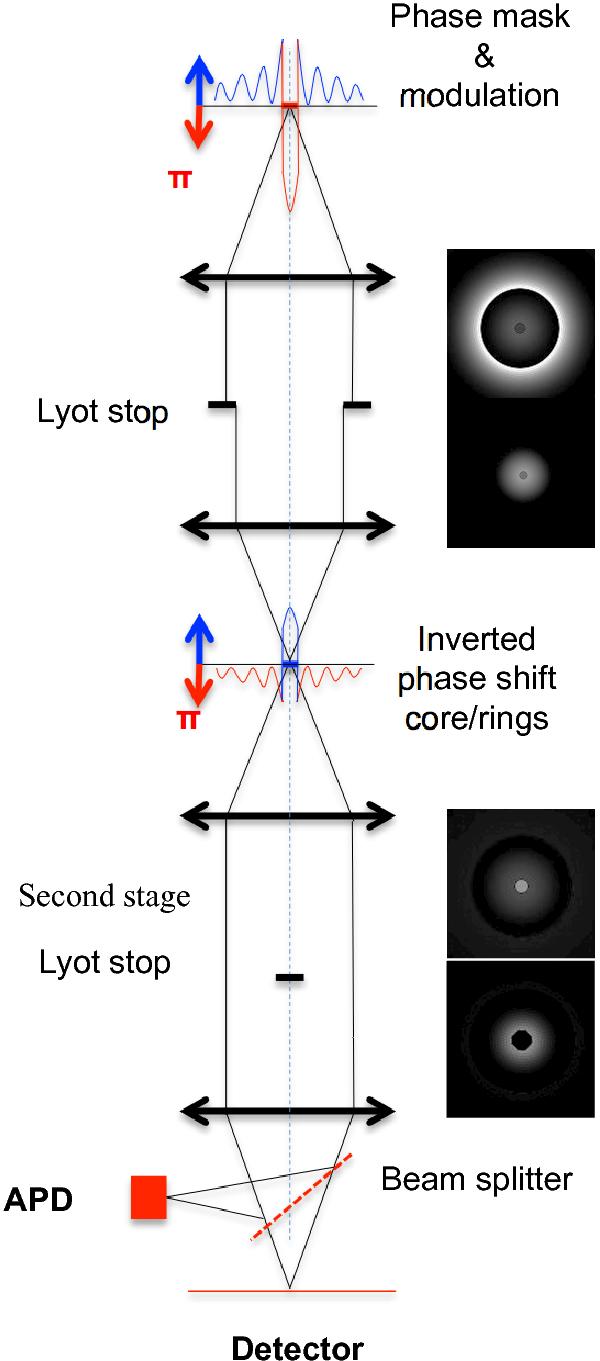Fig. 6

On the first APM, the phase shift is obtained by rotation of the polarization as shown in Fig. 2. The control loop on the transmission outside of the phase mask is done at the first stage of the coronagraph. At the second stage, the APM applies the reversed rotation of the polarization by exchanging the orientation of the twist applied to the nematic liquid crystal. On the right side of the figure, the pupils before and after the pupil Lyot stop are displayed for each stage. The diffraction effects on the masks are rejected outside of the pupil contour image at the first stage and inside the pupil contour image at the second stage. The remnant flux around the central obstruction image at the first stage is injected inside the central obstruction image at the second stage. The detection of the nulling by the APD is done at the output of the second stage. The second adaptive mask is passive, its effect on the destructive interference must be taken into account by the APD during the optimization of the nulling before closing the loop.
Current usage metrics show cumulative count of Article Views (full-text article views including HTML views, PDF and ePub downloads, according to the available data) and Abstracts Views on Vision4Press platform.
Data correspond to usage on the plateform after 2015. The current usage metrics is available 48-96 hours after online publication and is updated daily on week days.
Initial download of the metrics may take a while.


